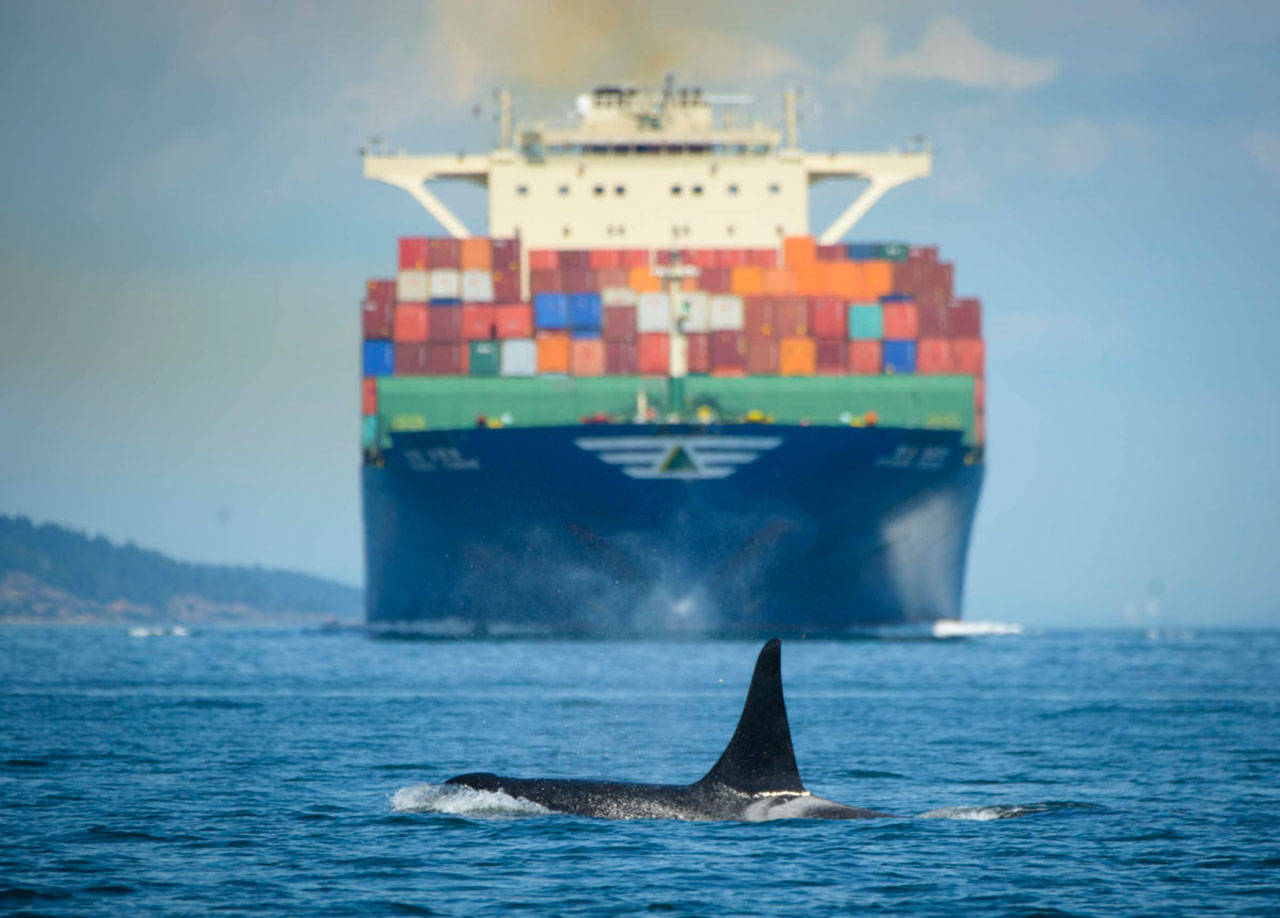During the peak tourist season, fumes settle over the water like a thick blanket. When an orca surfaces, it inhales a deep breath of vessel exhaust and dives back into the deep blue.
“Some days the fumes are so bad you can actually taste it; it’s like being in L.A.,” said Deborah Giles, who has studied the Southern resident orcas for more than a decade. The Southern residents frequent the San Juan Islands and include pods J, K and L. Over the years, this group has become popular with vacationers visiting the islands, and has captivated people’s attention around the globe.
Researchers asked, besides noise, does smog from boat traffic impact the health of the Southern residents, whose population has been declining to the point that they are considered an endangered species?
Samuel Wasser, director of University of Washington’s Center for Conservation Biology, thought to use dogs to study endangered animals. He realized that he could use hyper-focused dogs to sniff fecal matter, or scat, from the animals he was studying.
Wasser and his group of researchers have collected fecal samples from the local resident whales for more than a decade. The study uses dogs to sniff out whale scat, which is then collected, drained of seawater and frozen as soon as possible. Giles explained that the samples deteriorate rapidly, so it is important to put it on wet ice immediately. It is frozen later back at the lab.
“It is a win-win situation, and really ideal if you are trying to take a look at stress hormones,” said Giles. The study animal, she explained, does not have to be anywhere in the vicinity, therefore the presence of the researcher, and their dogs, would not stress the animal and skew the data scientists are attempting to find.
Polycyclic aromatic hydrocarbon is a dangerous and toxic compound found in oil and gas, was found in the orcas’ fecal matter. Past studies also have shown those pollutants have potentially been reduced in whales’ systems after whale-watch guidelines changed the distance boats could travel near the whales from 100 yards to 200 yards in 2010.
Toxicologist Jessica Lundin has been taking a closer look at pollutants found in the local whales’ fecal samples.
“We actually originally started looking at PAHs in the Southern residents to create a baseline in case of an oil spill,” Lundin said. She added that one of the problems in cleaning up the Exxon Valdez spill was that no data was available previous to the spill to compare a before and after.
“I was expecting to write a fairly boring paper, showing there was no presence of PAHs,” Lundin laughed.
According to the report in the Marine Pollution Bulletin — with data compiled by Giles, Lundin, Wasser, Bernadita Anulacion, Rebecca Booth, Daryle Boyd, Jennifer Hempelmann, Kim Parsons, Elizabeth Seely and Gina Ylitalo — fecal matter from these animals containing PAH possibly indicates exposure to vessel exhaust. PAH compounds are ranked as one of the 10 most toxic substances in the disease registry. One source of PAH in the marine environment is from boat exhaust. PAH exposure affects adrenal dysfunction; increases lung disease; causes cardiac, pulmonary, adrenal and gastric lesions; impairs immune system; and contributes to population decline.
The PAH molecules from exhaust have a heavier molecular structure to withstand the pressure of combustion. According to Lundin, PAH from an oil spill are lighter. Of the four fecal samples that contained PAH, three contained the molecular structure indicative of motor fumes.
Lundin added that studies show PAH from engines are known to drop after 200 meters, therefore it made sense that the fecal samples had less PAH after the guidelines were changed.
“It potentially shows that all the hard work people have been doing to save these animals could be paying off,” she said, “and that is something to celebrate.”
There is still more work to be done understanding how pollutions may be impacting the health of the whales, Lundin noted. However, the study set a good groundwork of data.
Marine mammals, Giles explained, are particularly vulnerable to the fumes.
“When the animal takes a deep dive, they surface, inhale a breath of smog, basically, ” she said. Marine animal’s lungs are designed to collapse with the pressure as they go into the ocean abyss, and all that air, or smog, is then pushed into their bloodstream, she explained.
Results of the study are not surprising to Giles. She has been out on the water with the whales and seen pollution across the ocean’s surface and recommends vessels stay downwind from the whales.
“I would like to see all the boats lined up behind and downwind of the orcas, if and when possible, to keep the fumes away from them,” she said.




